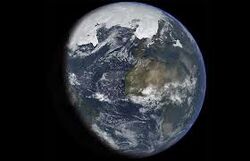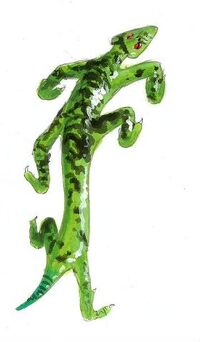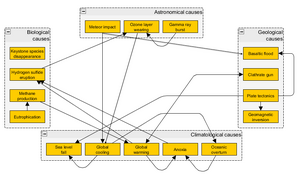Welcome to Speculative Evolution Wiki,
the wiki dedicated to speculative biology.
since its creation by Corvus coracis on June 15, 2014.
| Welcome to the New Wiki! |
|---|
|
Welcome everyone to the "official" opening of Speculative Evolution Wiki, the speculative Darwinian catalog that anyone can edit! Unfortunately the site is still low on members so it will still be some time before activity can really pick up and significant progress on articles can be made. But you can help! Bring up a topic over at the forums or start to contribute to the site! This wiki is not just an encyclopedia, but a place to share ideas. Create your own projects here, or just drop in on forum conversation. We also have ongoing community projects, and formal and informal competitions, with a chance to have your work displayed in a major project or featured on our main page! But what would a wiki be without encyclopedic content? If you happen to know much about published speculative evolution, you can help us with articles covering the works of Dougal Dixon, Peter Ward, and many more. Activity has slowed significantly in the past year, and the admins are now only on once every couple of months for routine checkups, but don't hesitate to contribute to the site or try and contact the admins! We still support this site, and your content and feedback can help us grow into a more widely used site like we once hoped to be. |
| What Is Speculative Evolution? |
|---|
|
Speculative evolution, also known as speculative biology, is a way of experimenting with Darwinian processes. Although every branch of this is unique, they all share one thing, and that is creative natural selection. Three major branches, along with two minor ones, are generally accepted. Future evolution, also known as an evolutionary continuum, is speculation about life from the future, especially that of the future of life on Earth. Alternative evolution explores possibilities of other Earths, generally powered by the butterfly effect, and having a point of divergence from our timeline. Most of these ask a question, like "What if the Chicxulub asteroid never hit the Earth?". Astrobiology, also known as exobiology or xenobiology, speculates about alien planets, and the strange life forms they could harbor. The other minor branches are speculation about the unknown (usually presented in a way that seems like the speculative creatures are/were real) and alternative universes (speculation about universes with different laws of physics). Certain works of speculative evolution may blur the lines between these categories, and this is usually taken well, adding an interesting level of complexity to a project. Have fun speculating! |
| Featured Project |
|---|
Future of The World What is the fate of life after present day? What forms will meet evolution, and which will meet extinction? Such is one of the most discussed subjects of speculative evolution, and evolution in general; there are many documentaries showing future evolution, such as The Future is Wild and After Man: A Zoology of the Future. This is a prediction of what will happen to the fauna of the world, from various million years from the future. This project might not be believable in your eyes, but such is the nature of speculative evolution and evolution itself. Five Million Years LaterIt's the dawn of a brand new ice age. Humanity's population has greatly declined over the years, and here are huge existing societies that are surviving pockets of large cities, such as New York or Paris. Intertwined successions of glaciation and heightened volcanic activity have reduced out civilisation to bands of people focused around these megacities and others. Presently, the earth is largely glaciated, similar to the late Pleistocene. The fauna of this time is fairly similar to that of our present day, but due to the extinction that wiped out many species, several major groups have drastically declined or gone extinct – examples include Proboscidea, forest adapted species in the Amazon, and the largest species of the order Carnivora. For the most part, hoofed mammals have replaced pachyderms, resulting in them evolving to much larger sizes. (Read more…) |
| Sign up for Wikia! |
|---|
|
This is a wiki powered by the company Wikia. Although as a wiki farm, Wikia allows guests to edit articles and discuss spec evo with our community, there are things that guests cannot do, and therefore it's encouraged to join us so that you may contribute more easily to our and other communites. If you wish to register, please sign up using the link at the upper-right of the page. |
| Projects |
|---|
| Future Evolution | Alternative Evolution | Exobiology |
|---|---|---|
News
Competitions
Projects
- Lists of projects:
- Check out project overviews and have your interest piqued!
- Official project list
Affiliates
Community
- Community Portal
- Join our wiki's forum!
- Live chat
Featured Image
Flow chart of how mass extinction causes affect each other
Current Poll
Create an article



